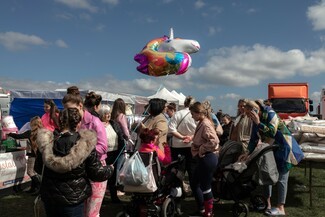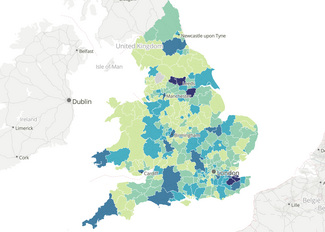’Younger and more likely to be looking after relatives' - Government Census reveals

The government have released a report delving into the characteristics of the 71,440 people who identified as “Gypsy or Irish Traveller” in the England and Wales Census, which took place in March, 2021.
Some of the snapshot headlines from the report, released by the Office for National Statistics earlier this month, are that:
- Gypsies and Irish Travellers (who answered the Census) are about 0.12% of the population – in other words for every Gypsy or Irish Traveller, there are nearly a thousand non-Gypsy and Traveller people.
- Gypsies and Irish Travellers are also nearly a thousand times more likely to live in a mobile home or caravan than a non-Gypsy or Irish Traveller.
- However, only one in five of Gypsies and Irish Travellers live in mobile homes or caravans – the rest live in flats, houses and bungalows.
- Nearly ¾ of Gypsies and Irish Travellers reported being in good or very good health.
- However, the proportion of how many reported being in bad health was a lot higher than the wider population – nearly twice as many for late middle-aged to elderly Gypsies and Irish Travellers
- Gypsies or Irish Travellers were almost twice as likely to provide 50 or more hours of unpaid care per week for a relative or friend than the wider population.
- Self-employment was more common among Gypsies and Irish Travellers than in the wider population – and the most popular occupation (among men in England) was skilled trades.
- Nearly two-thirds of those who identified as Gypsy or Irish Traveller also identified as Christian. This was higher than the wider population of whom less than half identified as Christian.
- Those who identified as Gypsy or Irish Traveller and Christian were also younger on average – 28 years old - compared to Christians from the wider population, who averaged 51 years old.
- There are more younger and less elderly Gypsies and Irish Travellers proportionately than the wider population.
The full government report can be read here: Gypsy or Irish Traveller populations, England and Wales Census 2021
Or downloaded below:
The England and Wales Census takes place every ten years and is when the government asks every adult to fill in a big list of questions either online, or in a paper form delivered to their house or mobile home.
The government say that it helps them to keep track of what services and infrastructure is needed for everyone.
The government report on Gypsies and Irish Travellers is one of many on various population groups that is released a year or two after the Census has taken place.
71,440 of those people who filled in the Census identified as “Gypsy or Irish Traveller”. There is a separate tick box for Roma and just over 100,000 people living in England and Wales identified as Roma.
However, the Census is an undercount and the number of Gypsies and Travellers living in England and Wales are a lot more than 71,440.

Researchers at Salford University estimated in 2013 that the true size of the Gypsy, Roma, and Traveller population was nearer 500,000, and GRT charities generally agree that there are at least 300,000 Gypsies and Travellers living across the UK.
There are more Gypsies and Travellers in England and Wales than the Census reports because, he Traveller Movement say, many will have either not filled in the Census, or would not have disclosed their ethnicity if they did so.
The Traveller Movement say that this is because of several possible reasons, including a distrust of authority, a reluctance to disclose ethnicity to authorities or for some people, a lack of the literacy skills needed to read the form and fill it in.
Many Gypsy and Traveller campaigners believe that the Census is important, because ‘you don’t count if you’re not counted,’ while others have concerns about the government keeping information about them linked to their ethnicity. Discrimination against Gypsies and Irish Travellers is rife today, and the pre-WW2 population of European Romani and Sinti people was nearly destroyed by Nazi and other fascist governments - and the generational trauma of that and still reverberates.
The approximately 2-3,000 Gypsies and Travellers living ‘roadside’ with no permanent base in the spring of 2021 (during Covid and before the travelling season started) would also have been unlikely to have taken part as the forms were mainly only delivered to registered sites.
The Scotland Census took place separately in 2022 after being delayed for a year because of Covid.
Although probably only about a ¼ of Gypsies and Irish Travellers living in England and Wales took part in the Census AND identified as such, the results to us ‘feel’ about right. What do you, our readers, think? Are the results of the Census a more or less reasonable snapshot of our communities?
TT News
(Stock photo: Kent Fair, 2023 © Eszter Halasi)